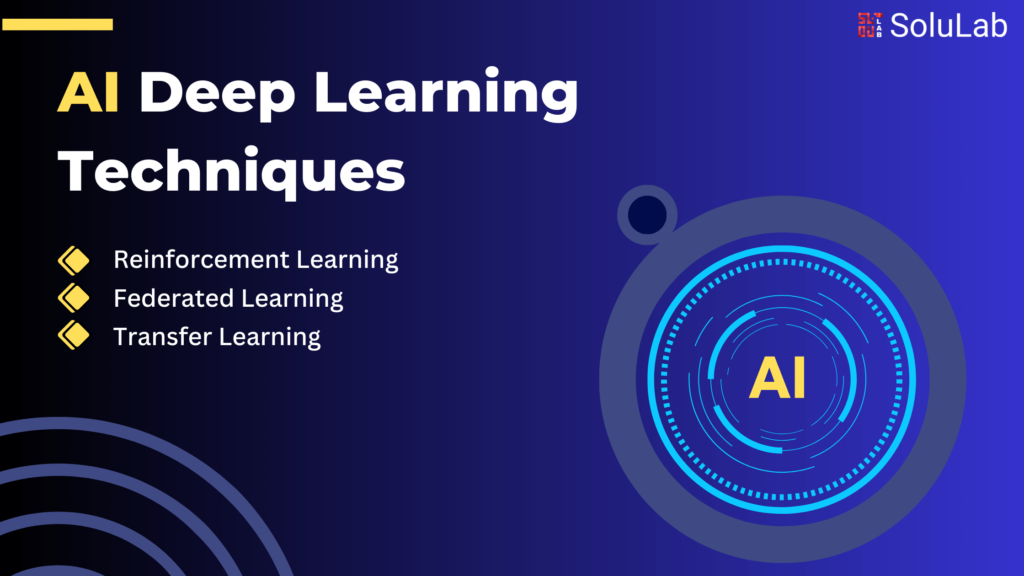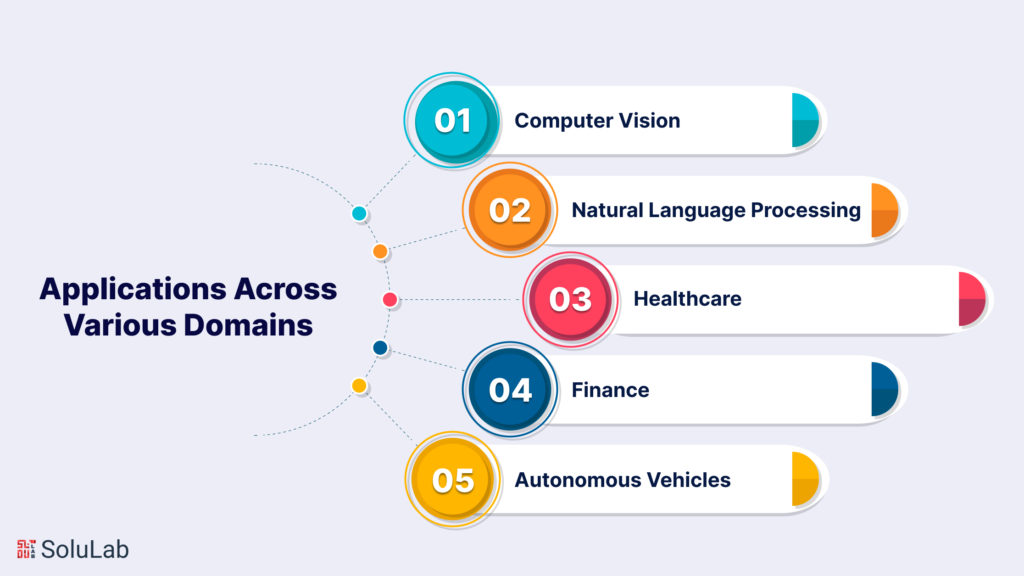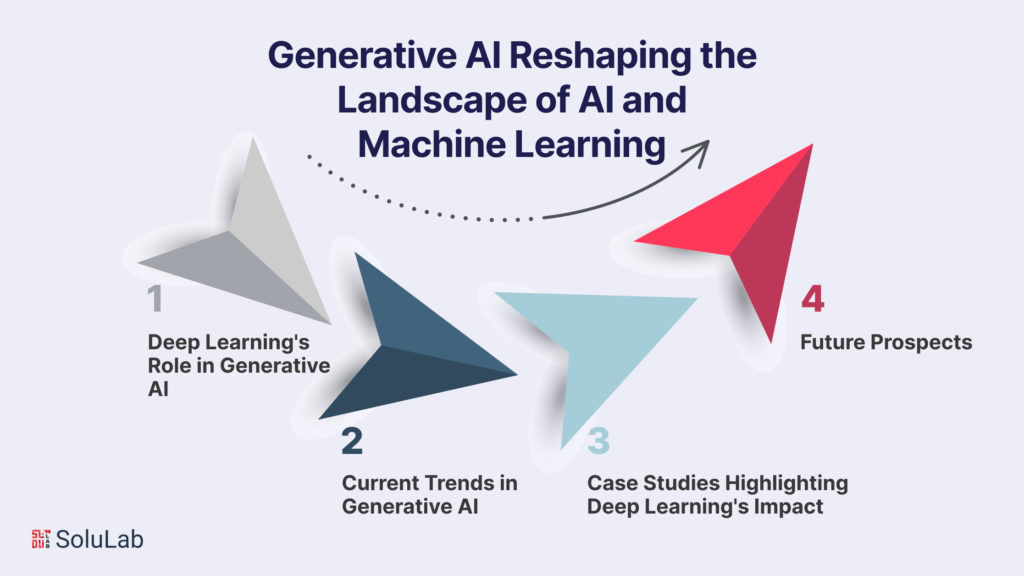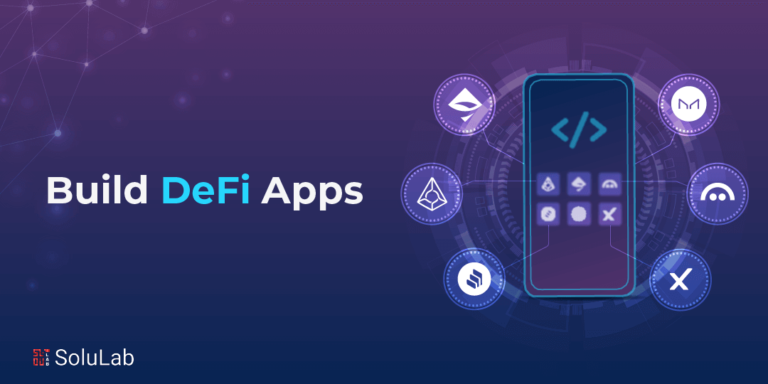
Deep learning, a subset of artificial intelligence (AI), has been on a remarkable journey of evolution. This remarkable technology has not only disrupted traditional machine learning but has also constantly adapted to meet the demands of an ever-evolving digital landscape. As we step into 2025, it’s crucial to delve into the significance of deep learning trends and understand how they are shaping the future of AI and machine learning.
One of the key trends in deep learning, which is gaining prominence in 2025, is federated learning. Federated learning represents a novel approach to training machine learning models, where data remains decentralized. This approach allows organizations to harness the collective intelligence of their data without exposing sensitive information. Federated learning promises to address privacy concerns while pushing the boundaries of machine learning capabilities.
The significance of deep learning trends in 2025 cannot be overstated. The technology continues to find applications in various industries, from healthcare to finance, and from autonomous vehicles to recommendation systems. These trends are not just theoretical concepts but practical solutions that businesses and developers can harness for real-world impact.
Reinforcement learning, a subset of deep learning, is gaining attention for its ability to enable machines to learn and make decisions through trial and error.
What Key Advantages and Challenges Does Federated Learning Present in the Context of Deep Learning Trends?
In the ever-evolving landscape of artificial intelligence, keeping up with deep learning trends is imperative to stay at the forefront of technological innovation. As we delve into 2025, the confluence of various cutting-edge techniques is poised to reshape the AI and machine learning domain. Among these trends, federated learning takes a prominent position. In this section, we will explore the basics of federated learning, its relevance in the context of deep learning trends, and how it is increasingly influencing business consultations for machine learning solutions.
A. Concept and Basics
Federated learning is a decentralized machine learning approach that emphasizes privacy and data security while harnessing the power of collective intelligence. Unlike traditional centralized models, federated learning operates on the principle of training models on local devices or servers, without sharing raw data.
These locally trained models aggregate their knowledge to create a global model. This concept aligns perfectly with the overarching deep learning trend, focusing on privacy and security, as well as machine learning approaches that empower distributed learning processes.
B. Applications in Real-World Scenarios
Federated learning finds its application in various real-world scenarios, showcasing its versatility and adaptability. In the healthcare sector, it allows different hospitals to collaborate on predictive models without exposing sensitive patient data.
Moreover, it plays a vital role in personalized recommendations in platforms like social media, making the user experience more customized without compromising privacy. These applications exemplify how federated learning is at the forefront of new advances in machine learning, catering to the demands of modern data-driven industries.
C. Advantages and Challenges
The advantages of federated learning are multifaceted. Preserving data privacy, addresses ethical concerns, which is a crucial aspect of AI trends in 2025. Additionally, it enables efficient model updates without transmitting vast datasets, reducing bandwidth and computational costs.
However, federated learning is not without its challenges. Synchronization of local models and dealing with non-IID (non-Independently and Identically Distributed) data can pose complexities. These intricacies necessitate continuous research and development, making it a prominent player in machine learning trends.
D. Federated Learning in Business Consultations
Federated learning is increasingly becoming a staple in business consultations for machine learning solutions. Companies are recognizing its potential in developing AI models while respecting data privacy and security.
This approach is particularly vital when AI models are required to be deployed across diverse geographic locations or with sensitive customer data. Hence, as businesses aim to hire AI developers who can provide tailored solutions, federated learning is a powerful tool in their arsenal, aligning with the latest AI trends.
What Role Does Reinforcement Learning Play in the Broader Landscape of AI Trends in 2025?
In the rapidly evolving landscape of artificial intelligence, staying at the forefront of cutting-edge technologies is crucial for individuals and organizations seeking to harness the full potential of AI. Among the many facets of AI, Reinforcement Learning (RL) stands out as a powerful and adaptable methodology, making waves in the world of deep learning trends in 2025.
A. Understanding Reinforcement Learning
-
Definition and Fundamentals
Reinforcement Learning (RL) is a critical aspect of AI, involving an agent’s interaction with an environment to maximize cumulative rewards through decision-making.
-
Trial and Error
RL operates on the principle of trial and error, much like how humans learn through experience.
-
Agent-Environment Interaction
RL agents take actions in environments, receive feedback in the form of rewards or penalties, and adjust their strategies accordingly.
B. Reinforcement Learning in Deep Learning
-
Deep Reinforcement Learning
Deep RL combines deep neural networks with RL algorithms, enabling AI systems to handle complex, high-dimensional data.
-
Applications in Control
Deep RL is particularly effective in tasks involving decision-making, control, and sequential behavior.
-
Real-World Examples
Examples include robotics, autonomous vehicles, and game AI, where Deep RL allows machines to adapt and improve their actions based on environmental feedback.
C. Real-World Applications and Success Stories
Healthcare OptimizationRL is used in healthcare to optimize treatment plans for patients, ensuring the most effective care and treatment strategies.
-
Financial Applications
In finance, RL algorithms are applied for portfolio management and algorithmic trading, maximizing returns while minimizing risks.
Historical Milestone
AlphaGo’s victory over the world champion Go, player, stands as a significant success story, showcasing the potential of RL in complex tasks.
D. Advancements in Reinforcement Learning in 2025
-
Continuous Evolution
In 2025, Reinforcement Learning continues to evolve with several significant advancements.
Algorithmic Improvements
Improved algorithms contribute to RL’s enhanced capabilities and efficiency.
-
Integration with Other Techniques
RL’s integration with Transfer Learning and Generative AI expands its application horizons, allowing models to learn from pre-trained knowledge and generate more insightful decisions.
E. Role in Federated Learning
RL plays a crucial role in Federated Learning, where multiple decentralized devices collaborate to train shared models while keeping data locally, making RL a pivotal element in the new advances in machine learning.
-
Relevance for AI Development
Given its growing importance, organizations may look to hire AI developers and seek machine learning consultations to harness the capabilities of Reinforcement Learning effectively.
In the rapidly evolving landscape of artificial intelligence, transfer learning stands out as a game-changer, redefining the way we approach machine learning tasks. It has gained prominence as one of the pivotal deep learning trends of 2025. In this article, we delve into the world of transfer learning, exploring its applications across various domains, the state-of-the-art models in 2025, and its critical role in AI development.
What are the Applications Across Various Domains?

Transfer learning, with its ability to transfer knowledge from one domain or task to another, has found applications across a wide spectrum of domains. From computer vision to natural language processing and beyond, it has left an indelible mark on the AI landscape.
-
Computer Vision
In the realm of computer vision, transfer learning has revolutionized object recognition, image segmentation, and object detection. Models pre-trained on extensive datasets have been fine-tuned for specific tasks, significantly reducing the need for large labeled datasets in novel applications.
-
Natural Language Processing
In NLP, transfer learning has led to remarkable breakthroughs in sentiment analysis, text classification, and language generation. Transformer-based models like GPT-3 and BERT, which incorporate transfer learning techniques, have set new standards for language understanding and generation.
-
Healthcare
In the medical domain, transfer learning has enabled the development of models for disease diagnosis, medical image analysis, and drug discovery. By leveraging pre-trained models, healthcare professionals can save time and resources while improving diagnostic accuracy.
-
Finance
Financial institutions have harnessed the power of transfer learning for fraud detection, stock market prediction, and risk assessment. The ability to adapt pre-existing models to specific financial scenarios has proven invaluable.
-
Autonomous Vehicles
In the quest for autonomous driving, transfer learning plays a pivotal role. Models trained on vast datasets can be fine-tuned for specific road conditions, weather, and terrains, accelerating progress in this field.
What are the State-of-the-Art Transfer Learning Models in 2025?
The year 2025 has witnessed remarkable advances in the realm of transfer learning models. Here are a few state-of-the-art models that have garnered significant attention:
-
GPT-4
The successor to GPT-3, GPT-4 represents the cutting-edge generative AI landscape. With 100 trillion parameters, it showcases the power of transfer learning in natural language generation and understanding. It’s not just a language model; it’s a knowledge model capable of multitasking across various domains.
-
CLIP
CLIP (Contrastive Language–Image Pre-training) is another milestone in transfer learning. It learns to understand images and text jointly, allowing for cross-modal understanding. This has applications in image classification, text-to-image generation, and much more.
-
ViT (Vision Transformer)
In the world of computer vision, Vision Transformers have taken center stage. Models like ViT demonstrate the success of transfer learning in image tasks. By pre-training on vast image datasets, ViT has excelled in image classification and object detection.
What is the Role of Transfer Learning in AI Development?
Transfer learning has become an indispensable tool in the toolkits of AI developers and machine learning practitioners. Its importance is highlighted by its role in addressing several critical aspects of AI development:
-
Efficiency
Transfer learning enables AI models to start with pre-existing knowledge, reducing the need for extensive training on new datasets. This significantly accelerates model development.
-
Resource Conservation
It conserves computational resources by leveraging pre-trained models, which is particularly beneficial for organizations with limited computational power.
-
Data Scarcity Mitigation
In domains where data is scarce, transfer learning allows for the adaptation of models from related domains, overcoming the data limitation challenge.
-
Generalization
Models that excel in one domain can be fine-tuned for another, promoting generalization and reusability of AI solutions.
How is the Synergy of Deep Learning and Generative AI Reshaping the Landscape of AI and Machine Learning?

In the ever-evolving landscape of AI and machine learning, one remarkable synergy that has gained substantial attention is the fusion of Deep Learning and Generative AI. This amalgamation holds the potential to revolutionize various industries and drive innovative solutions. Let’s explore the role of deep learning in generative AI, current trends, case studies showcasing its impact, and future prospects, all while considering key concepts and keywords in the AI and machine learning realm.
A. Deep Learning’s Role in Generative AI
Deep learning, as a subset of machine learning, plays a pivotal role in the development and success of generative AI. Generative AI models aim to create content, whether it’s images, text, or other forms of data, that mimics human-generated content. Deep learning techniques, such as deep neural networks and recurrent neural networks, are at the heart of generative models like GANs (Generative Adversarial Networks) and VAEs (Variational Autoencoders).
These deep learning models, with their ability to learn complex patterns and representations from large datasets, empower generative AI to generate content that is not only realistic but also highly diverse. This capability is essential in various applications, including image synthesis, natural language generation, and data augmentation. The synergy of deep learning and generative AI opens up possibilities for creative content generation, enhancing human-computer interactions and providing businesses with powerful tools for content creation.
B. Current Trends in Generative AI
In 2025, generative AI is experiencing a surge in popularity and advancements. Some notable trends include:
-
Enhanced Creativity
Deep learning models are being used to develop generative AI systems capable of producing highly creative and artistic content, from music composition to digital art.
-
Realistic Content Generation
Generative AI is creating content that is increasingly difficult to distinguish from human-generated content. This is being leveraged in industries such as media and entertainment.
-
Personalised Content
AI is tailoring content generation to individual preferences and needs, leading to more personalised user experiences in areas like e-commerce and content recommendations.
-
Ethical Considerations
As generative AI becomes more sophisticated, there’s growing concern about its ethical implications, including the potential for misuse or bias in generated content.
C. Case Studies Highlighting Deep Learning’s Impact
To appreciate the impact of deep learning in generative AI, we can look at some real-world case studies:
-
Artistic Expression with DeepDream
Google’s DeepDream project showcases how deep learning can transform ordinary images into surreal, dream-like artworks. This demonstrates the artistic potential of deep learning in generative AI tools.
-
ChatGPT and Natural Language Generation
OpenAI’s ChatGPT is a prime example of deep learning-powered generative AI for natural language generation. It engages in meaningful text-based conversations, thanks to its deep learning architecture.
-
Image Generation with StyleGAN
NVIDIA’s StyleGAN2 illustrates how deep learning can generate high-quality images with fine-grained control over their appearance. This technology is revolutionizing creative content generation and visual effects.
D. Future Prospects
The future prospects of the synergy between deep learning and generative AI are incredibly promising. We anticipate the following developments:
-
Improved Realism
Generative AI will continue to produce content of even higher realism, making it indispensable for applications like virtual reality, gaming, and design.
-
Wider Adoption
More businesses and industries will leverage generative AI tools to automate content creation, reducing costs and enhancing productivity.
-
Ethical Advancements
There will be a stronger focus on ethical considerations, including bias mitigation, responsible AI usage, and transparency in generative content generation.
-
Integration with Other Techniques
Deep learning and generative AI will collaborate with other techniques like federated learning, reinforcement learning, and transfer learning to create more versatile and capable AI systems.
Conclusion
SoluLab is at the forefront of the latest deep learning trends in 2025, leveraging cutting-edge techniques like federated learning, reinforcement learning, and transfer learning to stay ahead of the AI game. This blog explores how these techniques, in conjunction with deep learning and generative AI, have set new benchmarks in the world of machine learning, making SoluLab a sought-after destination for businesses looking to hire AI developers and seek expert consultations in this dynamic field.
Federated learning, one of the most promising deep learning techniques of 2025, is transforming the way AI models are trained. Instead of centralized data repositories, federated learning takes a decentralized approach, which allows machine learning models to be trained on local devices while preserving user privacy. SoluLab has been quick to embrace this revolutionary concept, as it aligns perfectly with the company’s commitment to ethical data handling and privacy preservation.
One of the major advancements in reinforcement learning that SoluLab has capitalized on is its combination with a generative AI development company, which allows for the creation of AI systems that can generate novel solutions to real-world problems. This has opened up new horizons for industries such as healthcare, where SoluLab’s AI models can discover groundbreaking treatments and optimize patient care.
FAQs
1. What is Federated Learning and how does it fit into Deep Learning Trends in 2025?
Federated Learning is a machine learning approach that allows model training on decentralized data sources. It’s a part of the current Deep Learning Trends as it addresses privacy concerns and is suitable for distributed data environments.
2. How can Federated Learning benefit businesses in 2025?
Businesses can leverage Federated Learning to collaboratively train models across multiple devices without sharing raw data, ensuring data privacy and security.
3. What are the main challenges in implementing Federated Learning for AI projects?
Challenges include communication overhead, non-IID data distributions, and maintaining model quality across decentralized devices.
4. Are there AI consultants specializing in Federated Learning for businesses?
Yes, there are AI consultants who can provide guidance on implementing Federated Learning for various business applications.
5. How does Reinforcement Learning contribute to Deep Learning and Generative AI in 2025?
Reinforcement Learning is a vital component for training AI agents to make decisions, which is crucial for generative AI, autonomous systems, and robotics.






